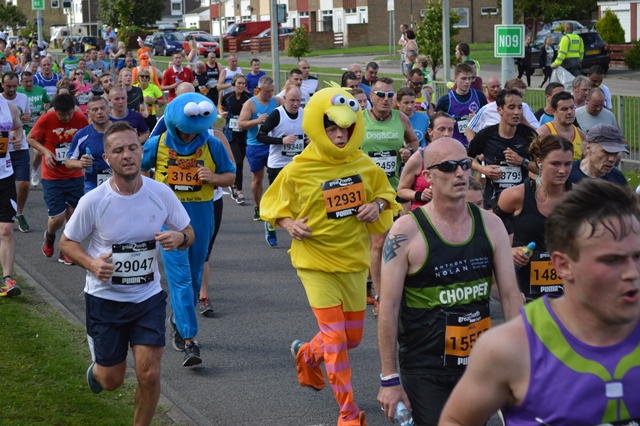For runners, a basic warm-up should focus primarily on loosening the leg and shoulder muscle groups. Doing a 10 to 15 minutes warming-up before starting your training run or race is time well spent. Warming up prior to any physical activity does a number of things, but primarily it helps to prepare the body and mind for the more strenuous activity it will be doing. One of the ways it achieves this is by helping to increase the body’s core temperature; this automatically increases the body’s muscle temperature. By increasing muscle temperature you’re helping to make the muscles loose, supple and pliable.
A proper warm up also has the effect of increasing both your heart rate and your respiratory rate. Increased heart rate increases blood flow, which in turn increases the delivery of oxygen and nutrients to the working muscles. All this helps to prepare the muscles, tendons and joints for more strenuous activity.
Key Elements of a Warming-up Routine
A structured warm-up should start gently and build up to mimicking the activities that will be done during the main physical activity, in this case running. We suggest a warm-up plan with elements to include the joints and muscles that you will be using when you run and will include:
- A Basic Warm-up
- Dynamic Stretching
- Running form drills
Basic Warm-up
To increase the heart and respiratory rate and core temperature a Basic warm up should consist of a light physical activity, like walking, jogging. Both the intensity and duration of the basic warm up, depends on your athletic fitness level. However, a correct warm up for the average athlete should take about five to ten minutes. Any type of warm-up should result in a light sweat. Now the blood is flowing faster, your joints are lubricated, and the muscles are warmed-up, you can move to the next element which is static stretching.
Dynamic Stretches
Dynamic stretching for runners uses momentum and active muscular effort to stretch the muscles within the particular movement. Dynamic stretching is different from static stretching in that it doesn’t stop at the end of the movement. The dynamic stretch is like any other movement but is over exaggerated or made onto a bigger movement to stretch the muscles slightly further than they normally would.
Dynamic stretching is much safer than ballistic stretching because dynamic stretching doesn’t use bouncing motions which could lead to injuries due to the stretch reflex. Dynamic stretching uses motions which are similar to the target sport for which the stretches are being performed to signal to the body what is going to happen during the main workout (and thereby preparing the nervous system).
Examples of dynamic stretching are circling the arms, making a kicking movement and doing lunges (big steps). Kicking actions can be used to dynamically stretch the calves and the hamstrings and reduce tension in the hip joint by exaggerating the running movement.
It is suggested that you incorporate dynamic stretches into your warm-up routine as long as they are appropriate to your running movements. During all dynamic stretching movements, you should continue to breathe calmly and focus on relaxing the muscles.
The latest research suggests that dynamic stretching is preferred for warming up and static stretching is most ideal for the cool-down.
The following dynamic stretching exercises are specific for a runner before a training run or any race up to a full marathon.
Before doing dynamic stretches, always do a warm-up jog between 5 to 10 minutes to get the blood flowing and the heart pumping.
Running Form Drills
In this a very essential part of the warming-up, there is a focus on the movements of a runner and the muscles involved. It is dynamically stretching and warming-up of the running muscles. Going through the same movements as you do in running but in exaggerated form. These exaggerated movements will stretch, and by intense movement warm the muscles used during distance and marathon running. Remember that running a short distance from the 100m sprint to 1000m uses different mechanics than longer distance and marathon running so the warming-up is not the same.

